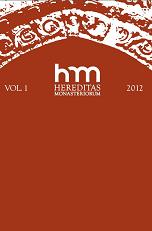Książka i biblioteka bazyliańska w XVII–XVIII w. oraz wpływ kasat na stan ich zachowania i opracowania
The book and library of the Basilian Fathers in 17th and 18th centuries and the impact of the dissolution on the state of their conservation and scien
Author(s): Maria Pidłypczak-MajerowiczSubject(s): History
Published by: Laboratoire de Recherches sur l'Histoire des Congregations et Ordres Religieux (LARHCOR)
Keywords: book; library; monastery; Basilian Fathers; monastery printing; dissolution; the First Polish Republic; dispersing of books collection
Summary/Abstract: The book in the Congregation of St. Basil in 17th and 18th centuries has constituted a bridge between the cultures of Eastern and Western Europe. It has participated in the successes and failures of the order, it joined the two worlds of Christian spiritual culture – the Roman Catholic Church and the Easter Orthodox Church. The Basilians had their facilities on the eastern lands of the Polish Republic, were acting in accordance to the rule of st. Basil the Great and the religious constitutions, were the formation of monks, but their activities qualified them for clerical orders. They have led extensive pastoral activities, charity, led elementary schools, philosophical and theological high schools and colleges, printed and published books in Latin, Polish, Church Slavonic stamped in Cyrillic, translated foreign works, they were engaged in religious and secular writing, mostly historical. They issued more than 1,400 prints, which were printed in their own six typographic publishing houses. The Basilian Fathers were gathering and maintaining their own monastic libraries, whose number was equal to the number of their religious institutions. It was an order of well-educated people, many of them studied abroad, mainly in Italy, spoke foreign languages, travelled across the Europe, were respected preachers and confessors, regarded teachers and writers – what is confirmed by Polish, Belarusian, Russian, and Ukrainian bibliographies. They were significant monastic force in education and printing right behind the Jesuits and Piarists, they undertook competition with other Latin convents in different forms of activity. Destroyed by the tsarist ukase during the Russian annexation, they were reborn during the Austrian occupation after reform in 1882, they are still active in Poland.
Journal: Hereditas Monasteriorum
- Issue Year: 2012
- Issue No: 1
- Page Range: 85-97
- Page Count: 13
- Language: Polish

